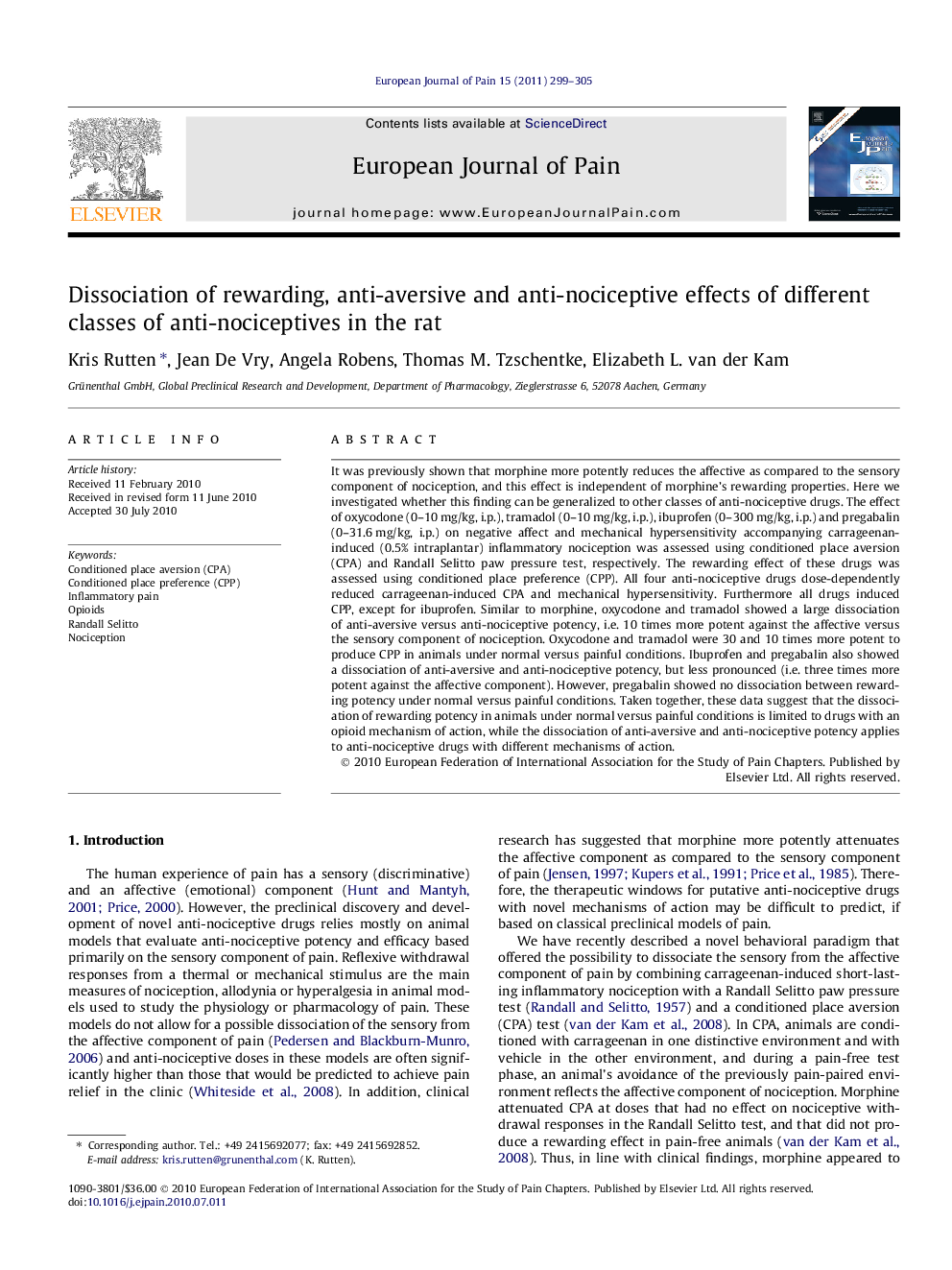| کد مقاله | کد نشریه | سال انتشار | مقاله انگلیسی | نسخه تمام متن |
|---|---|---|---|---|
| 7265694 | 1472896 | 2011 | 7 صفحه PDF | دانلود رایگان |
عنوان انگلیسی مقاله ISI
Dissociation of rewarding, anti-aversive and anti-nociceptive effects of different classes of anti-nociceptives in the rat
دانلود مقاله + سفارش ترجمه
دانلود مقاله ISI انگلیسی
رایگان برای ایرانیان
کلمات کلیدی
موضوعات مرتبط
علوم زیستی و بیوفناوری
علم عصب شناسی
علوم اعصاب سلولی و مولکولی
پیش نمایش صفحه اول مقاله

چکیده انگلیسی
It was previously shown that morphine more potently reduces the affective as compared to the sensory component of nociception, and this effect is independent of morphine's rewarding properties. Here we investigated whether this finding can be generalized to other classes of anti-nociceptive drugs. The effect of oxycodone (0-10Â mg/kg, i.p.), tramadol (0-10Â mg/kg, i.p.), ibuprofen (0-300Â mg/kg, i.p.) and pregabalin (0-31.6Â mg/kg, i.p.) on negative affect and mechanical hypersensitivity accompanying carrageenan-induced (0.5% intraplantar) inflammatory nociception was assessed using conditioned place aversion (CPA) and Randall Selitto paw pressure test, respectively. The rewarding effect of these drugs was assessed using conditioned place preference (CPP). All four anti-nociceptive drugs dose-dependently reduced carrageenan-induced CPA and mechanical hypersensitivity. Furthermore all drugs induced CPP, except for ibuprofen. Similar to morphine, oxycodone and tramadol showed a large dissociation of anti-aversive versus anti-nociceptive potency, i.e. 10 times more potent against the affective versus the sensory component of nociception. Oxycodone and tramadol were 30 and 10 times more potent to produce CPP in animals under normal versus painful conditions. Ibuprofen and pregabalin also showed a dissociation of anti-aversive and anti-nociceptive potency, but less pronounced (i.e. three times more potent against the affective component). However, pregabalin showed no dissociation between rewarding potency under normal versus painful conditions. Taken together, these data suggest that the dissociation of rewarding potency in animals under normal versus painful conditions is limited to drugs with an opioid mechanism of action, while the dissociation of anti-aversive and anti-nociceptive potency applies to anti-nociceptive drugs with different mechanisms of action.
ناشر
Database: Elsevier - ScienceDirect (ساینس دایرکت)
Journal: European Journal of Pain - Volume 15, Issue 3, March 2011, Pages 299-305
Journal: European Journal of Pain - Volume 15, Issue 3, March 2011, Pages 299-305
نویسندگان
Kris Rutten, Jean De Vry, Angela Robens, Thomas M. Tzschentke, Elizabeth L. van der Kam,